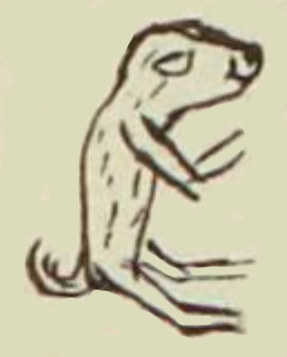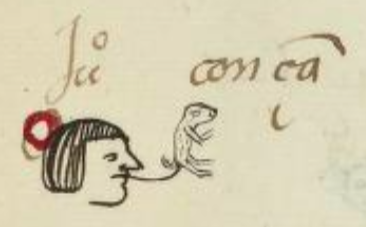Cozan (MH809v)
This black-line drawing of the simplex glyph for the personal name Cozan (short for cozantli, which can mean lynx, weasel, or ferret) is attested here as a man’s name. Some even say a cozantli is a snow leopard! (Obviously, the translation requires further work.) The glyph shows a small animal with a textured coat. It is standing on its hind legs, in profile, and facing toward the viewer’s right. Its front legs are raised, and its little tail curls.
Stephanie Wood
This animal does not resemble the cozantli (lynx or snow leopard) in the Codex Mendoza (see below). The cozatli adds two more possibilities. Given the propensity for the letter “n” to drop or be intrusive, it is difficult to say whether this animal is a cozatli or a cozantli. Weasels do still exist in Mexico, but ferrets have died out.
Stephanie Wood
1560
Jeff Haskett-Wood
animales, linces, onzas, hurones, comadrejas, nombres de hombres

cozan(tli), a lynx, snow leopard, or other small wild animal, https://nahuatl.wired-humanities.org/content/cozantli
coza(tli), weasel or ferret, https://nahuatl.wired-humanities.org/content/cozatli
posiblemente, Lince o Comadreja
Stephanie Wood
Matrícula de Huexotzinco, folio 809v, World Digital Library, https://www.loc.gov/resource/gdcwdl.wdl_15282/?sp=693st=image.
This manuscript is hosted by the Library of Congress and the World Digital Library; used here with the Creative Commons, “Attribution-NonCommercial-ShareAlike 3.0 License” (CC-BY-NC-SAq 3.0).


